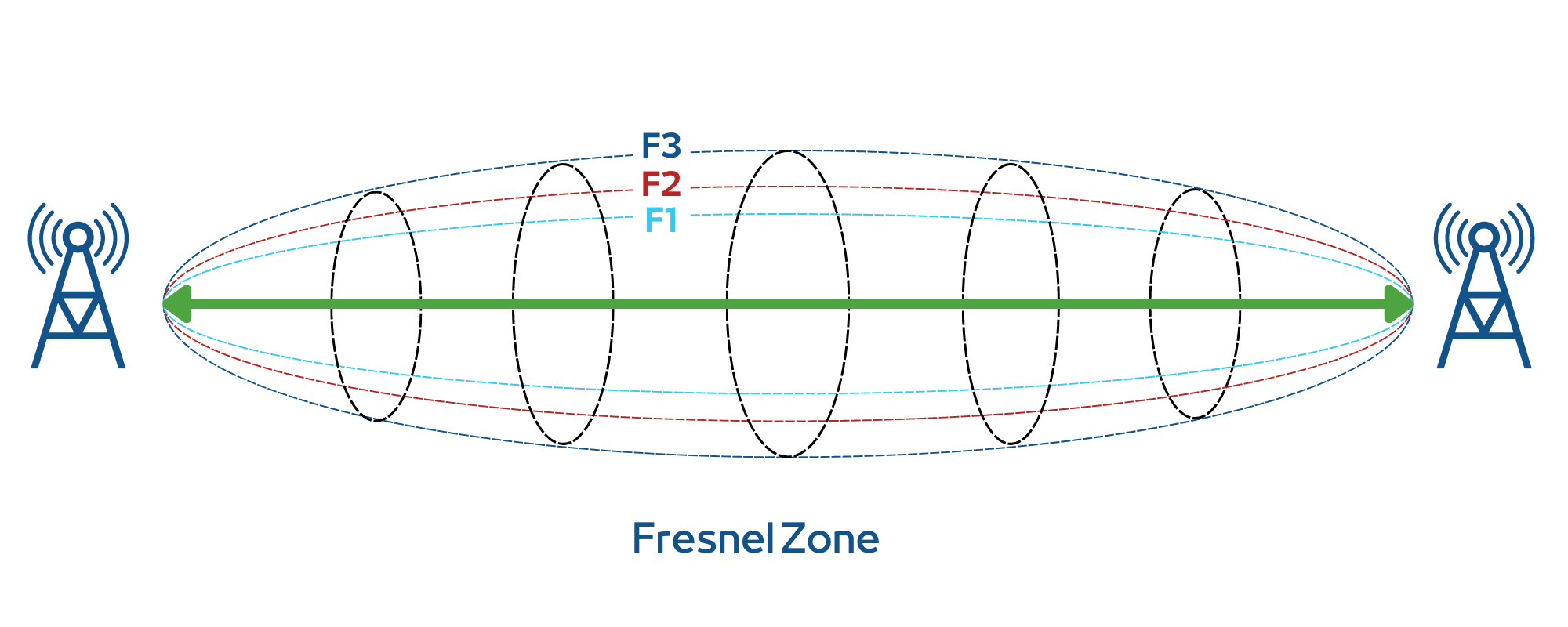One of the essential concepts in wireless communication is the Fresnel zone. An elliptical region surrounds a straight line-of-sight communication path between two points. The Fresnel zone plays a crucial role in wireless communication. It determines the clearance required between transmitting and receiving antennas to ensure that the transmitted signal is received with minimal interference.
All about the free space
If you are to establish a link between two points wirelessly, the signal must be able to travel through the air between points A and B. The ideal condition for all radio communication is an unobstructed line of sight between A and B. However, some communication also works with a more or less clear line of sight. A good rule of thumb is that low frequencies, such as FM radio transmissions, perform better in situations with unclear visibility than higher frequencies. Wifi is one example that only works brilliantly at longer distances if visibility is unobscured or there is no material between antenna A and B.
Line of site
When a radio wave is transmitted between two points, it travels in a straight line-of-sight path but also spreads out as it propagates through the atmosphere. The Fresnel zone is the area around the direct line-of-sight path where the radio wave is affected by this spreading and can be affected by obstacles such as buildings or trees. This zone is crucial because it is where the radio wave must propagate to ensure successful communication.

The Fresnel zone, where the magic happens
When you talk about clear vision, you soon come into contact with the Fresnel zone, a concept that can be compared to an invisible tube between antennae A and B. This zone must be free of obstacles to function optimally; in the case of wifi, 60% of the zone has to be free of obstructions, while the other professional radio links can manage 40%. The diameter of the pipe, that is, the diameter of the zone, is different for different frequencies and, as we touched on, affects different frequencies differently. The fresnel zone determines how high antenna masts must be built if you want to reach long distances.
The Fresnel zone’s size depends on the radio signal’s wavelength and the distance between the transmitting and receiving antennas. The zone widens in the middle and narrows towards the edges, forming an elliptical shape. Most of the Fresnel zone must be free of obstacles or interference for successful communication. Any obstruction in the Fresnel zone can lead to a decrease in signal strength and, as a result, signal quality.
It is also essential to note that different frequencies have different Fresnel zones, and the diameter of the zone affects different frequencies differently.
If the signal is obstructed, it can lead to poor signal quality, retransmissions, lower data speed, or package loss. All affect the signal negatively.

